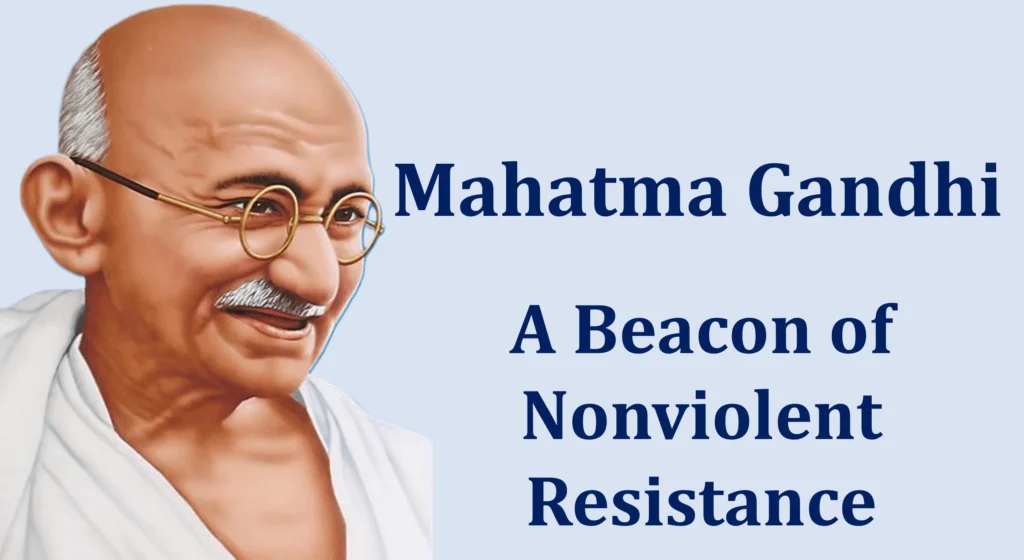
Mahatma Gandhi was and is popular among the masses by this name. However, his parents gave him the name Mohandas Karamchand Gandhi when he began his life’s journey. He was essential to India’s struggle for independence. His commitment to nonviolence is revered around the world. He developed the trait of honesty in his personality in addition to adhering to the nonviolence philosophy. His unique approach to change-making not only benefited India but also inspired numerous other movements around the world. Through this blogpost I’ll try to write for you all about the major events of Gandhiji’s life, their significance and its impact on India and rest of the world.
Formative years of Mahatma Gandhi (1869-1888)
Mahatma Gandhi was born on October 2, 1869, at Porbandar, a coastal town in Gujarat. He came from a Vaishya family. His mother Putlibai was a devoted Hindu who practiced the religion, while his father Karamchand Gandhi served as a diwan in the province of Porbandar. Gandhi’s mother’s religious convictions and morals had a big impact on him as a young man.
Despite having a meager early education, Gandhi shown a strong passion in learning. At the age of 13 he was married to Kasturba Makhanji who was a year older than him. As it was typical at that time in India for young people to get married. With only 19 years old, Gandhi set ship for London in 1888 to pursue a legal education. The transformational path he would go on began with this.
Careers in Law in South Africa (1893-1914)
Even though Gandhi’s first few years in London were difficult, he persisted and finished his legal education. He relocated to South Africa in 1893 to practice law there. Gandhi’s life significantly changed while he was living in South Africa. He experienced pervasive racial injustice and discrimination, which had a significant impact on him.
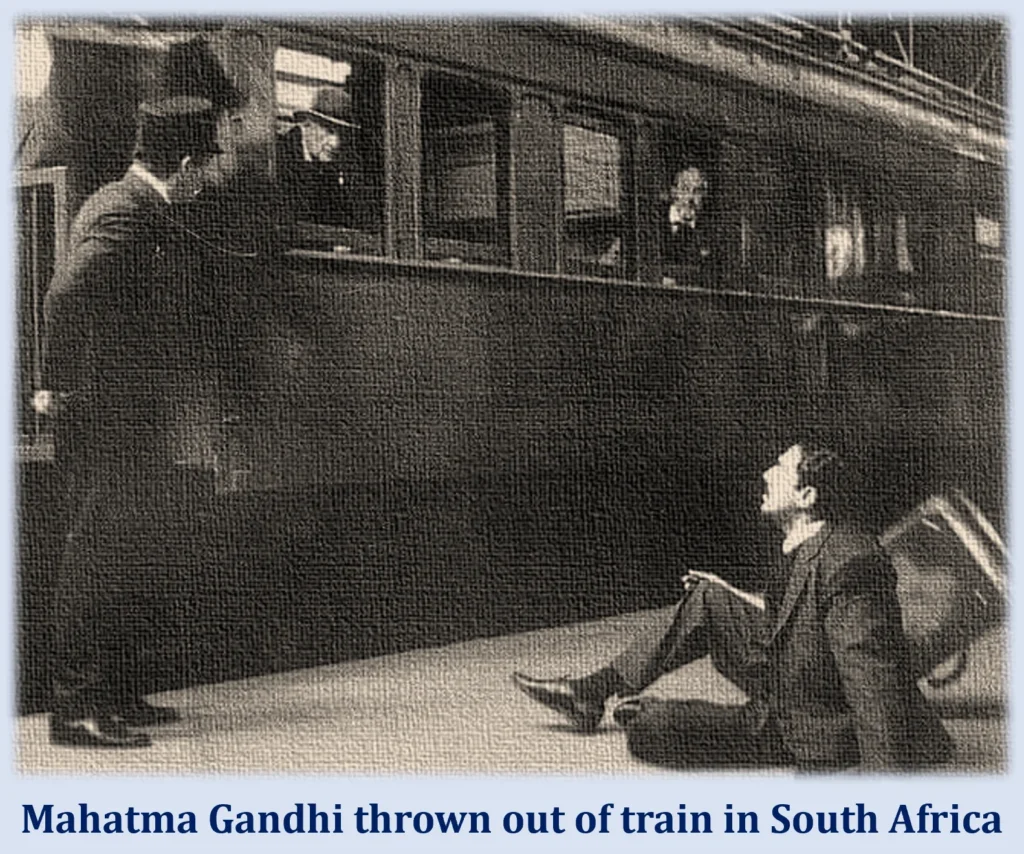
Gandhi’s spirit of resistance was sown by one crucial event in 1893, when he was kicked from a train despite having a valid ticket. He started holding nonviolent demonstrations against South Africa’s prejudice against Indians. This served as the foundation for his peaceful resistance doctrine, or Satyagraha.
Over the following 20 years, Gandhi rose to prominence in South Africa’s Indian community. Numerous protests, boycotts, and debates with the South African government were spurred by his behavior. He worked to remove racial segregation and gain the Indian community’s basic rights by nonviolent means, such as the right to vote.
Mahatma Gandhi back to the soil (1915)
Gandhi left South Africa in 1915 with a set of civil disobedience and nonviolence ideas that he carried with him to India. He was keen to use these ideas to aid India in its fight for freedom from British colonial domination. It was his principles that earned him the title of “Mahatma” from Rabindranath Tagore.
Now it was the turn of India to see the magic of the principles of this Mahatma. One of his early campaigns in India was the Champaran Satyagraha in 1917. In the Champaran district of Bihar, indigo farmers were subjected to oppressive practices by British indigo planters.
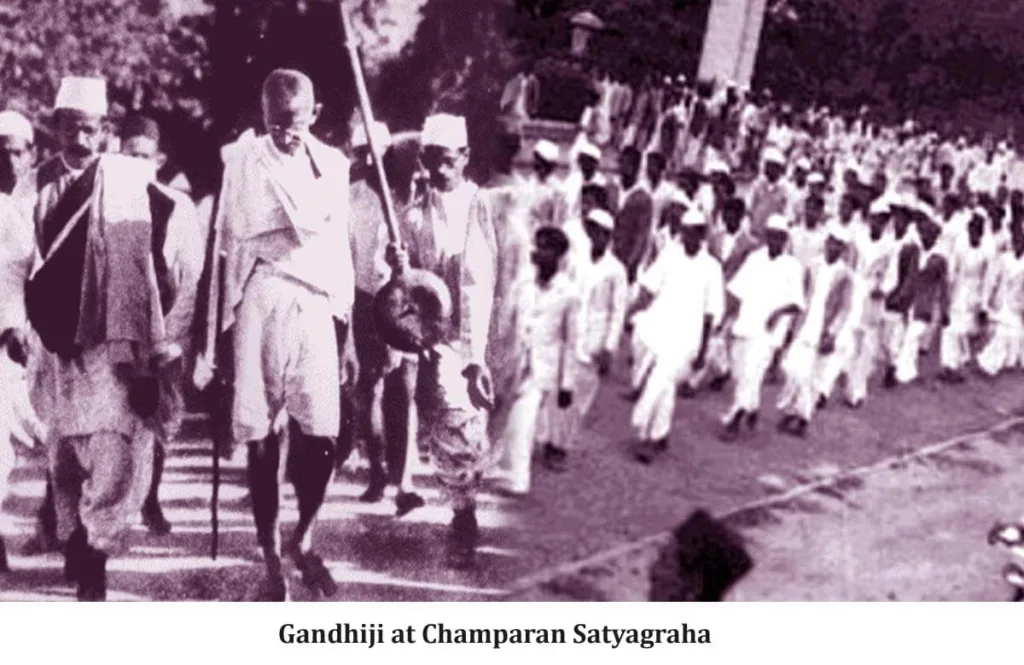
Gandhi led a successful nonviolent protest, demanding fair treatment for the farmers and an end to exploitative indigo cultivation. This marked the beginning of his larger role in India’s freedom movement.
Kheda Agitations
In 1918, during floods and famine in Kheda, Gandhi organized a protest against high taxes. He used non-cooperation and a signature campaign, and after five months of resistance, the government gave in to some of their demands.
Mahatma Gandhi Supported Khilafat Movement
In 1919, Gandhi supported the Khilafat movement to unite Hindus and Muslims against British imperialism. This led to temporary Hindu-Muslim harmony but also some conflicts. Ultimately, the movement collapsed in 1922.
The Non-Cooperation Movement (1920-1922)
Gandhi launched the Non-Cooperation Movement in 1920 and it was a mass protest against British rule. He called on Indians to boycott British institutions, products, and titles. This movement gained immense popularity and saw widespread participation across India. All types of people i.e., from different community, section and religion came together to engage in peaceful protest.
The Non-Cooperation Movement proved the effectiveness of nonviolent resistance and civil disobedience, and it marked a critical turning point in the war for independence. After a violent episode in Chauri Chaura in which a police station was burned on fire and several officers died, it was briefly discontinued in 1922.
Imprisonment and Return to Politics (1922-1930)
Gandhi was detained and given a prison term when the Non-Cooperation Movement was called off. He continued to promote nonviolence and racial harmony while he was imprisoned. He went on multiple hunger strikes to express his displeasure with the government’s actions and to encourage harmony among the various religious groups.
Round Table Conferences
Gandhiji did not participate in the first and third round table conference, but he did go to London to participate in the second one. Gandhi sought complete independence for India, but the British authorities weren’t willing to provide it. Even though they didn’t agree, these summits increased global awareness of India’s struggle for independence.
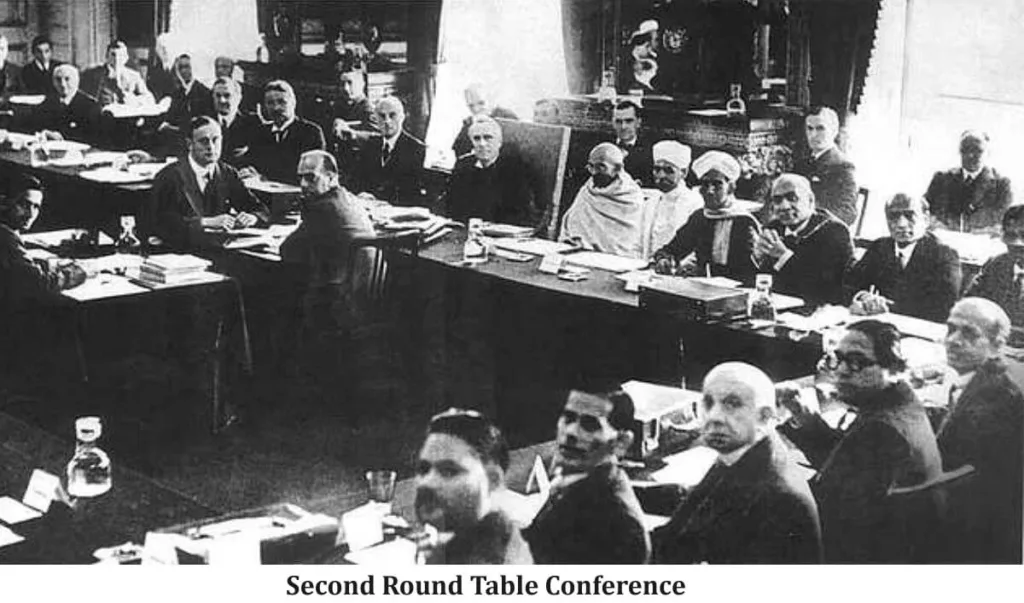
Civil Disobedience Movement
One of the most iconic events in his campaign for independence was the Salt March of 1930. In an act of civil disobedience, Gandhi led a 240-mile march to the Arabian Sea to protest the British salt monopoly. This event galvanized millions and drew international attention to the Indian independence movement. Gandhi continued to fight hard for India’s right to rule itself after returning home. He launched the Civil Disobedience Movement in 1932.
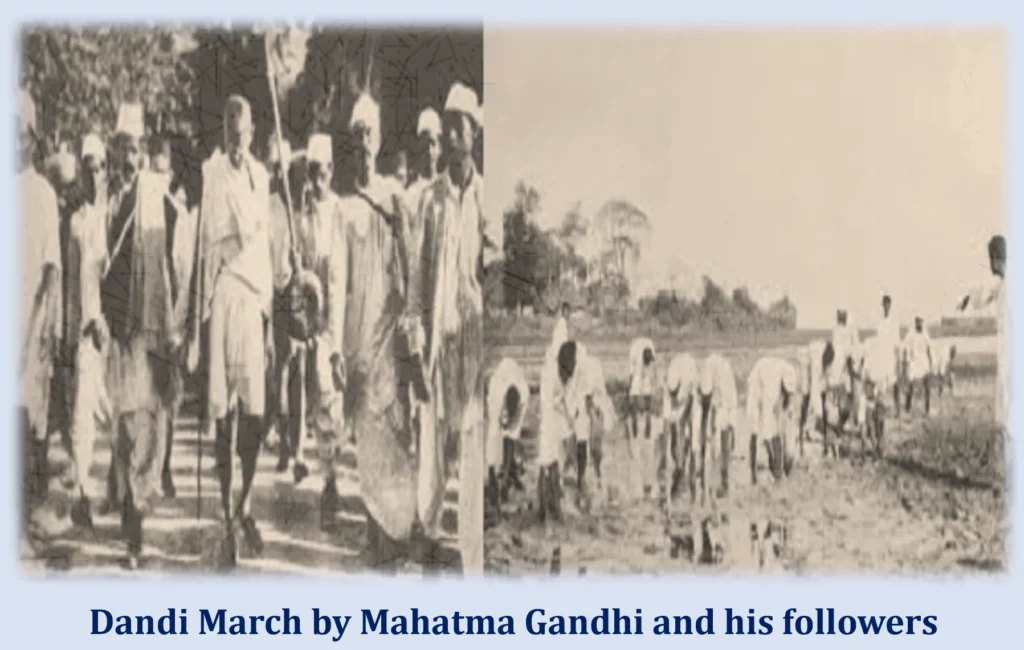
He warned Indians against abiding by discriminatory laws and contributing to the British administration. As a result, there were several arrests and jail sentences during a period of intense protests. In 1934, Gandhi temporarily withdrew from active politics to focus on constructive work, such as rural development and social reform, which included the promotion of Khadi (hand-spun cloth) and the improvement for the Dalits, often known as the “untouchables.”
The Quit India Movement during World War II (1942)
During World War II, Gandhi took a firm stance against supporting the British war effort unless India was granted immediate independence. He launched the Quit India Movement in 1942, demanding an end to British rule in India with the movement cry as “Do or die”. The movement saw widespread protests and strikes, and Gandhi and other leaders were arrested.
The Quit India Movement marked a critical phase in the struggle for independence. Despite facing severe repression, it rekindled the spirit of resistance and further weakened the British hold on India.
From Mahatma Gandhi to Father of Nation
The India we see today has evolved from a rich and ancient civilization. Before Gandhiji’s arrival from South Africa, this diverse, multi-ethnic nation was often marred by violent regional conflicts. The leaders like Bal Ganga Dhar Tilak, Lala Lajpat Rai, Bipin Chandra Pal, Aurobindo Ghosh and many more were popular for their way of struggle. However, they were confined to specific regions. They failed to become the voice of the entire India. Even the congress was also popular among the literates and elite class and failed to connect with the masses.
It was Mahatma Gandhi who was able to connect to all the sections of the society and gave birth to the feeling of nationalism over regionalism among all Indians. All this was closely observed by Netaji Subhas Chandra Bose who in spite of having differences with Gandhiji was inspired by his mass popularity and idea of socialism. It was on 22 February 1944 when ‘Ba’ (Kasturba) passed away Netaji messaged Gandhiji of June 4th,1944 from Azad Hind Radio, Rangoon and addressed him as “The father of the nation” for the first time.
Independence and Partition (1947)
The years following World War II witnessed increasing pressure on the British to leave India. In 1947, they finally decided to grant independence to India. On August 15, 1947, however, India and Pakistan became two distinct countries as a result of the partition debate. Gandhi was deeply pained by the communal violence that accompanied partition. He undertook several fasts and worked tirelessly to promote peace and reconciliation between Hindus and Muslims. His efforts played a crucial role in mitigating the violence to some extent.
Assassination of Mahatma Gandhi
It was unfortunate for India when so called a Hindu Extremist named Nathuram Godse assassinated Mahatma Gandhi on January 30, 1948. He argued to have disagreed with Gandhi’s beliefs in religious tolerance and avoiding violence. It was a severe shock for the nation as Gandhiji left us soon after we gained Independence and India had a long way to go ahead. As some people in the country call Nathuram Godse as a Hindu Extremist I believe him to be a symbol of cowardness, falsehood and selfishness. Undoubtedly, Hinduism talks about “Vasudhaiva Kutumbakam”i.e., the earth is one family and Gandhiji promoted it through his principle of non-violence. Then how can anyone even support Godse’s deed wrapping it with religion.
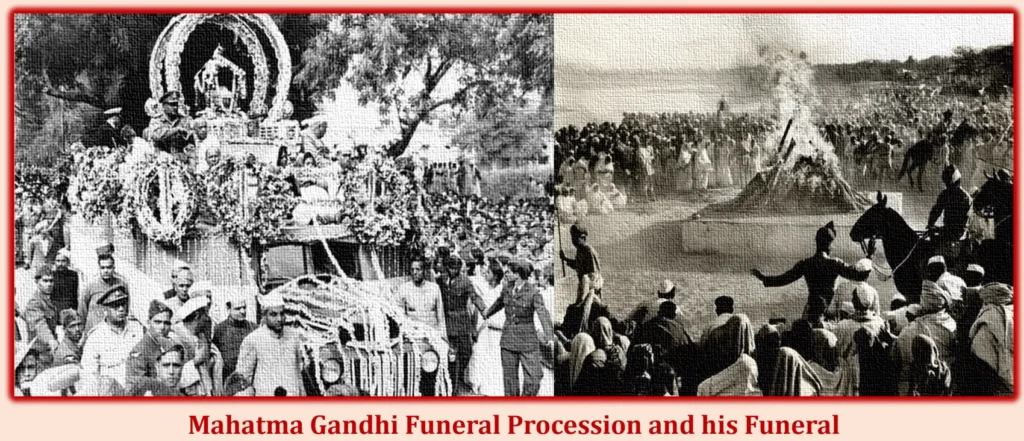
However, Gandhi’s ideas had a lasting impact on the world. His peaceful methods and use of civil disobedience changed how people fought for fairness and civil rights worldwide. The name of leaders like Martin Luther King Junior from the United States and Nelson Mandela from South Africa might have gained your attention some or the other time. They were two leaders among many others who were deeply inspired from the teachings of Gandhiji. They used them in their own struggles for equal rights.
Conclusion
Mahatma Gandhi always promoted the goal of transforming India into a free, just, and democratic nation. The dreams of Gandhiji became true when the constitution of India was adopted. His principles are clearly reflected through the Directive principles of the state Policy in part IV (Article 36-51) of Indian Constitution. His teachings still encourage people all around the world to work for peace and fairness.
In India, they celebrate his birthday on October 2 as Gandhi Jayanti, and it’s also known as “The International Day of Non-Violence.” This is to honor his belief in solving problems without fighting. I feel sad when I see that when our father of nation is respected around the world there are some radical groups which are continuously supporting the coward Nathuram Godse. We must put aside our differences in religion and work to advance humanity as Indian citizens. Gandhiji attempted to teach us this throughout his life. So, let’s pledge to be a good human and love thy neighbors.
